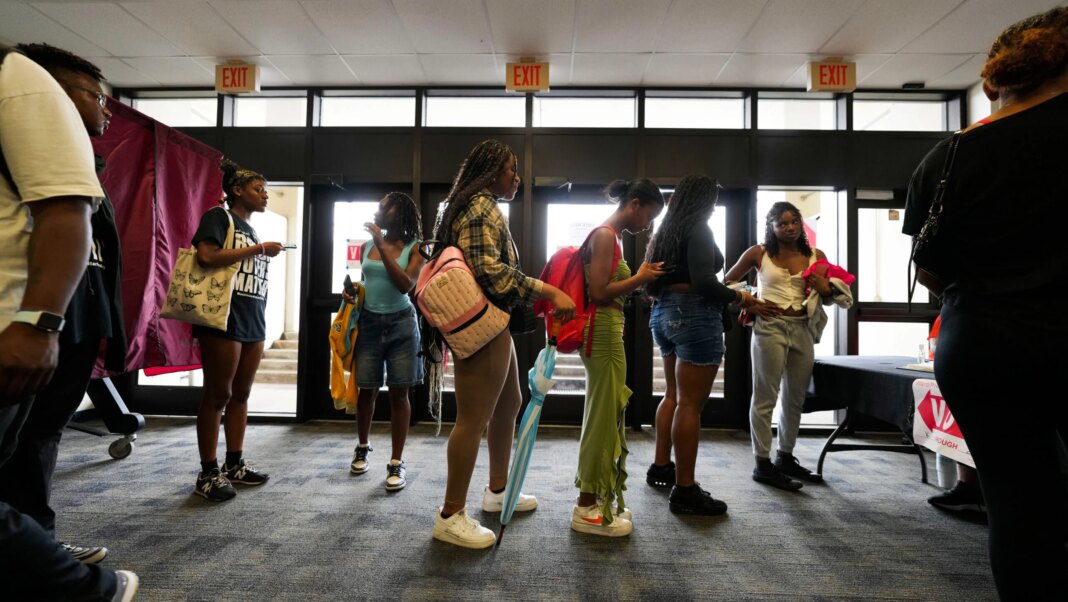A Critical Crossroads for the Voting Rights Act
The Voting Rights Act, a cornerstone of American democracy aimed at safeguarding the voting rights of racial minorities, is once again under peril. This week, the Supreme Court is set to hear arguments challenging a vital provision of the Act, echoing the shadows of a decade-long campaign to dismantle its protections.
The Core of the Challenge
Representatives from Louisiana and the Trump administration argue for a significant alteration to how race is considered in redistricting. At the heart of their case is the desire to eliminate Louisiana’s second majority Black congressional district. Louisiana Attorney General Elizabeth Murrill explicitly states that “race-based redistricting is fundamentally contrary to our Constitution.” This assertion puts not only congressional maps but also the mechanisms that ensure fair representation at stake.
Implications of the Redistricting Battle
The upcoming hearings coincide with a broader narrative unfolding across the nation. Republican-controlled states, encouraged by former President Trump, are redrawing electoral maps in a bid to solidify their political power. A favorable ruling for Louisiana could enable similar maneuvers across multiple states, potentially reshaping legislative boundaries and diminishing minority representation accordingly.
The Conservative Court’s Reception
The Supreme Court, characterized by its conservative majority, is seen as possibly receptive to these arguments. Chief Justice John Roberts, with a long history of scrutinizing the Voting Rights Act, stands at the forefront. His past dissenting opinions reflect a disdain for racial considerations in political maps, encapsulated in his statement, “It is a sordid business, this divvying us up by race.”
History and Context
The challenge also brings to light the 2013 decision authored by Roberts that eliminated the requirement for states with histories of racial discrimination to receive federal approval before altering voting laws. His rationale was rooted in a belief that the country had changed, suggesting that new legislation must reflect contemporary realities. However, current voting patterns, particularly in states like Louisiana, indicate that racial polarization remains a significant issue, undermining this claim.
Section 2 and Current Conditions
Under Section 2 of the Voting Rights Act, there is a legal standard requiring proof of current racially polarized voting. Proponents of maintaining this section, like Sarah Brannon from the American Civil Liberties Union, emphasize that race continues to play a critical role in voting dynamics. The successful intervention by civil rights groups in Louisiana indicates that the fight for equitable representation is far from over.
Legal Progression in Louisiana
The case gained momentum when Black voters and civil rights organizations successfully sued to challenge the initial congressional map, which only featured one majority Black district despite the population being one-third Black. Following a Supreme Court ruling in 2023 involving Alabama’s congressional map, Louisiana was compelled to add a second majority Black district, a step viewed as necessary by the court.
A Potential Shift in Judicial Stance
The Supreme Court’s call for additional arguments is a rarity that often signals a potential transformation in judicial approach. This was evidenced by the historic Citizens United ruling, demonstrating that the court’s stance on election-related cases is not static. Some experts predict that the current case could signal a pivot away from requiring courts to intervene in redistricting unless intentional discrimination is explicitly proven.
Impact on Legislative Power
A change in judicial outlook could significantly empower state legislatures. If the court limits or even dismisses most racial discrimination claims, it would pave the way for more latitude in district drawing, constrained only by state constitutional laws. With the Trump administration aligning with Louisiana, the stakes are exceptionally high, marking a shift in a bipartisanship approach toward the Voting Rights Act.
Historical Echoes: Rep. Cleo Fields
Rep. Cleo Fields, who previously represented a similar district during the 1990s, recalls the impact of such legal battles. His tenure was marked by the struggle to maintain a second majority Black district, which was ultimately invalidated due to an overemphasis on race in its creation. Fields stands as a living testament to the ongoing fight over representation, arguing that without the framework of the Voting Rights Act, the election of representatives for minority communities would be nearly impossible.
Redistribution and Its Implications
The debate surrounding Louisiana’s congressional map reflects deeper societal issues rooted in systemic inequalities. Fields notes that the strange contours of his district—“a snake that runs from one end of the state to the other”—are a direct consequence of historical injustices like slavery and Jim Crow laws. The discussions in the Supreme Court could reverberate through the fabric of American politics, calling into question what equitable representation should look like in a nation still grappling with the scars of its past.
Closing Thought
As we navigate this critical moment in history, the outcome of the Supreme Court’s deliberations may not just reshape Louisiana’s electoral landscape but could redefine the parameters of voting rights across the United States. The fight for fair representation continues to unfold, echoing the struggles of generations past while highlighting the pressing need for vigilance in the ongoing battle for civil rights.



